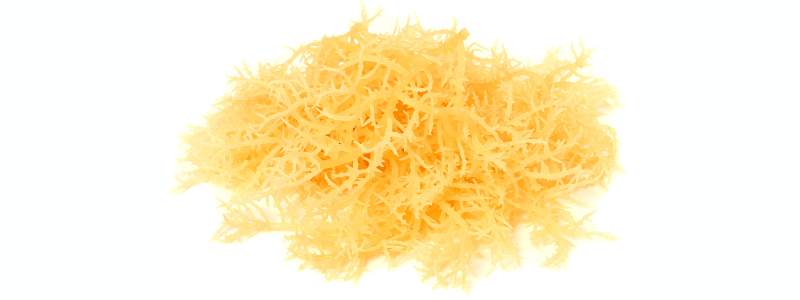 15 Sep 2022
15 Sep 2022
Seaweed or marine algae belong to a large group of autotrophic organisms. They can be unicellular (microalgae or phytoplankton) or multicellular (macroalgae) with sizes ranging from 0.2-2.0 microns up to 60 m, respectively. Their reproduction occurs through simple division and due to the simplicity of their structure, they tend to grow faster than any other plant. Therefore, they are characterized as the most productive plants on the planet (Marsall, 2007):
There are about 320,500 species of algae.The amount of cultivated or native macroalgae used in industry during recent years rounds up to nearly 7.5-8 million tons per year (Becker, 2007).
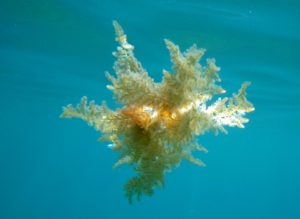
Nutritional composition of algae
The nutritional value of algae depends on their size, digestibility, presence of toxic substances and chemical composition (Becker, 1994).
Algae are a remarkable source of protein, with a content of 10-15% in macro-algae (Oliveira et al., 2009) and 28-71% in microalgae. In addition, the content of certain amino acids such as lysine, methionine, tryptophan, threonine, valine, histidine and isoleucine is comparable to that of eggs or soybean seeds. [register]
Fleurence (1999) observed that the protein content in algae was highest at the end of the winter months and lowest during the summer months.
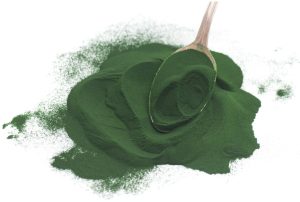
Fat content in seaweed ranges from 1-40% (Borowitzka, 1988),and fatty acids can be saturated or unsaturated.
Particularly, spirulina algae contain 20-30% linolenic acid, while Porphrìdium cruentum known as red algae, is one of the richest sources of arachidonic acid. Containing close to 36% of total fats at 25°C, while at 16°C it increases to 60%.
Different species of algae are very good sources of cellulose, with contents of up to 35-50 g/100 g in dry matter (Lahaye, 1991).
Their mineral content is sufficiently high (13-25%) compared to other plant organisms (5-10% – USDA 2001). Their contents of both macronutrients (Na, K, Ca, Mg) and trace elements (Fe, Zn, Mn, Cu) are high. Ranging from 8-17g/100g of algae and 5.1-15.2 mg/100g of algae, respectively.
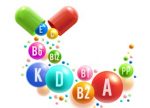
Moreover, the various species of algae make up a valuable source of almost all important vitamins, such as tocopherols, ascorbic acid, B1; B2, B6, B12, nicotinic acid, provitamin A, etc.,
Algae contain pigments and in fact, seaweed is one of the richest sources of both chlorophyll (0.5-1.5% of dry matter) as well as carotenoids (0.1-2% dry matter), such as: β-carotene, lycopene, zeaxanthin, astaxanthin and lutein.
![]() Undesirable ingredients found in algae
Undesirable ingredients found in algae
Various toxic substances or with anti-nutritional properties can be found in algae. An example of these toxic agents are lectins, which bind to red blood cells. Amongst the anti-nutritional factors, some affect the activity of enzymes like trypsin and α-amylase. Ethanols and phytic acid are also present amongst these antinutritional factors. (Rehman and Shah, 2004).
Heavy metals have been detected in several species of algae. Some of these such as cadmium, chromium, nickel and vanadium are considered to be toxic at relatively high levels (Oliveira et al., 2009).
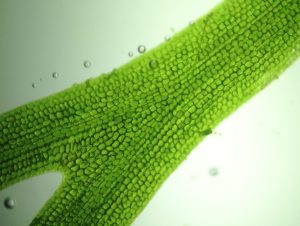
Use of seaweed in animal nutrition
![]() Braden et al. (2007) report that the administration of macroalgae (Ascophyllum nodosum) in calf diets strengthened their immune system and improved meat characteristics.
Braden et al. (2007) report that the administration of macroalgae (Ascophyllum nodosum) in calf diets strengthened their immune system and improved meat characteristics.
![]() According to McHugh (2003), the administration of algae (Ascophyllum hodosum) in dairy cows increased the percentage of pregnancies, especially during summer months. Simkus et al., (2007) and Kulpys et al. (2009) found an increase in milk fat, protein and lactose content compared to cows whose diet did not include algae.
According to McHugh (2003), the administration of algae (Ascophyllum hodosum) in dairy cows increased the percentage of pregnancies, especially during summer months. Simkus et al., (2007) and Kulpys et al. (2009) found an increase in milk fat, protein and lactose content compared to cows whose diet did not include algae.
In recent years algae have been used in ruminant diets as a means to to provide valuable fatty acids for human health.
Franklin et al. (1999) have shown that the addition of microalgae (Schizochytrìum sp. ) in dairy cow diets, resulted in an increase in the content of docosahexaenoic acid (DHA) and conjugated linoleic acid (CLA) in milk fat, while reducing the content of saturated fatty acids.
![]() Grinstead et al. (2000) suggested the use of microalgae (Spirulina platensis) as a protein supplement in the diet of weaned piglets. The results of the studies showed that when pigs ingested small amounts of algae (up to 2%), small improvements in their weight gain appeared.
Grinstead et al. (2000) suggested the use of microalgae (Spirulina platensis) as a protein supplement in the diet of weaned piglets. The results of the studies showed that when pigs ingested small amounts of algae (up to 2%), small improvements in their weight gain appeared.
McHugh (2003) obtained similar findings with a 3% inclusion of algae in pig diets.
![]() Administration of algae meal at 4-10% in the diet of laying hens resulted in an increase in iodine content in both the yolk and egg white.
Administration of algae meal at 4-10% in the diet of laying hens resulted in an increase in iodine content in both the yolk and egg white.
Grigorova et al. (2006) found that the incorporation of microalgae, chlorella, 2% and 10% into the diet of laying hens increased the linolenic acid (omega-3) content in egg yolks. This was especially true when dietary seaweed inclusion was close to 10%.
Carrillo et al. (2008), incorporated macrocystis (Macrocystispyrìfera)at a 10% level in hen diets. They found an increase in albumin levels and, like previous researchers, they also observed increases in the content of omega-3 fatty acids. The inclusion of this algae species in laying hen diets also reinforced egg yolk color.
![]() Yoshida and Hoshii (1982), used microalgae (Chlorella) in the diet of broilers to replace traditional protein sources (e.g. soybean meal). They found that feed conversion rates did not seem to be affected by different algae inclusion percentages.
Yoshida and Hoshii (1982), used microalgae (Chlorella) in the diet of broilers to replace traditional protein sources (e.g. soybean meal). They found that feed conversion rates did not seem to be affected by different algae inclusion percentages.
As a concluding remark, it can be said that these simple aquatic, photosynthetic organisms, known as algae(seaweed) can be used as feed alternatives in animal nutrition. Considering their nutritional properties, mainly as partial substitutes of vegetable protein sources.
Source: Abstract taken and modified from “The use of algae in animal nutrition. “Journal of the Hellenic Veterinary Medical Society, 61(3), 267-276. CHRISTAKI (Ε. ΧΡΗΣΤΑΚΗ), E., KARATZIA (Μ. ΚΑΡΑΤΖΙΑ), M., & FLOROU-PANERI (Π. ΦΛΩΡΟΥ-ΠΑΝΕΡΗ), P. (2017).
[/register]
Subscribe now to the technical magazine of animal nutrition
AUTHORS

Nutritional Interventions to Improve Fertility in Male Broiler Breeders
Edgar Oviedo
The Use of Organic Acids in Poultry: A Natural Path to Health and Productivity
M. Naeem
Synergistic Benefits of Prebiotics and Probiotics in Poultry, Swine, and Cattle
Gustavo Adolfo Quintana-Ospina
Hybrid Rye Potential in Laying Hen Feed Rations
Gwendolyn Jones
A day in the life of phosphorus in pigs: Part I
Rafael Duran Giménez-Rico
Use of enzymes in diets for ruminants
Braulio de la Calle Campos
Minerals and Hoof Health in the Pregnant Sow
Juan Gabriel Espino
Impact of Oxidized Fats on Swine Reproduction and Offspring
Maria Alejandra Perez Alvarado